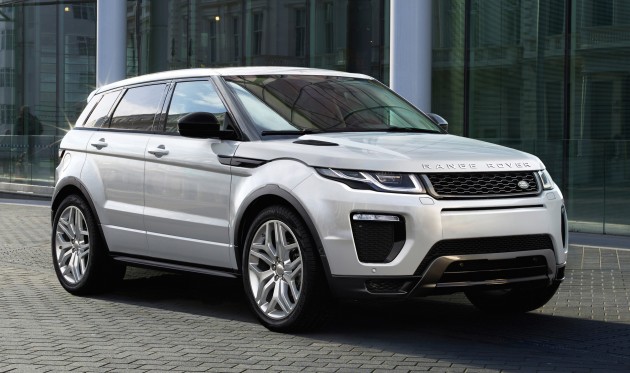
Previewed last week, we now have full details of the 2016 Range Rover Evoque facelift. As expected, it's not a ground-breaking update, but the changes should be significant enough to keep JLR's best-selling model fresh for years to come. Why attempt to fix what's not broken, right?
The Evoque has never come short in the looks department, that's for sure. The 2016 facelift introduces a new front bumper with larger air intakes and slim LED foglamps, two grille designs (standard and Dynamic), three wheel options and a more prominent tailgate spoiler.
Also new are the full-LED headlights, making the Evoque the first Jaguar Land Rover model to have such a system fitted. It gets a distinctive LED DRL signature, which is mirrored in the updated rear light graphics. The bonnet vents, previously exclusive to Coupe models, can now be had on five-door variants too.
The subtle changes continue inside as well, with redesigned seats, door cards and instrument cluster. The front seats can now be equipped with a massage function, and the centre console uses JLR's new smartphone-like eight-inch InControl Touch system. Land Rover says the cabin features new premium soft-touch materials too.
Mechanically, the 2016 Evoque boasts all-new aluminium diesel engines that are said to be 20 to 30 kg lighter than the outgoing Ford-based units. Part of JLR's Ingenium lineup, the 2.0 litre turbodiesel engine can be had in two forms: 150 PS or 180 PS. The former (badged eD4) is 18% more efficient than the model it replaces, averaging 4.2 litres per 100 km (23.8 km/l).
Surprisingly, the Ford EcoBoost petrol engines go unchanged. The 240 PS Si4 variant (carrying red Evoque badges as opposed to blue ones on the eD4) can get to 100 km/h in 7.6 seconds, while using 7.8 litres per 100 km (12.8 km/l). The nine-speed automatic transmission from ZF stays as before.
Other system updates include All-Terrain Progress Control (ATPC) from the latest Range Rover (basically off-roading cruise control), as well as Lane-Keeping Assist, Autonomous Emergency Braking (AEB) and Attention Assist Estimation active safety systems.

No comments:
Post a Comment